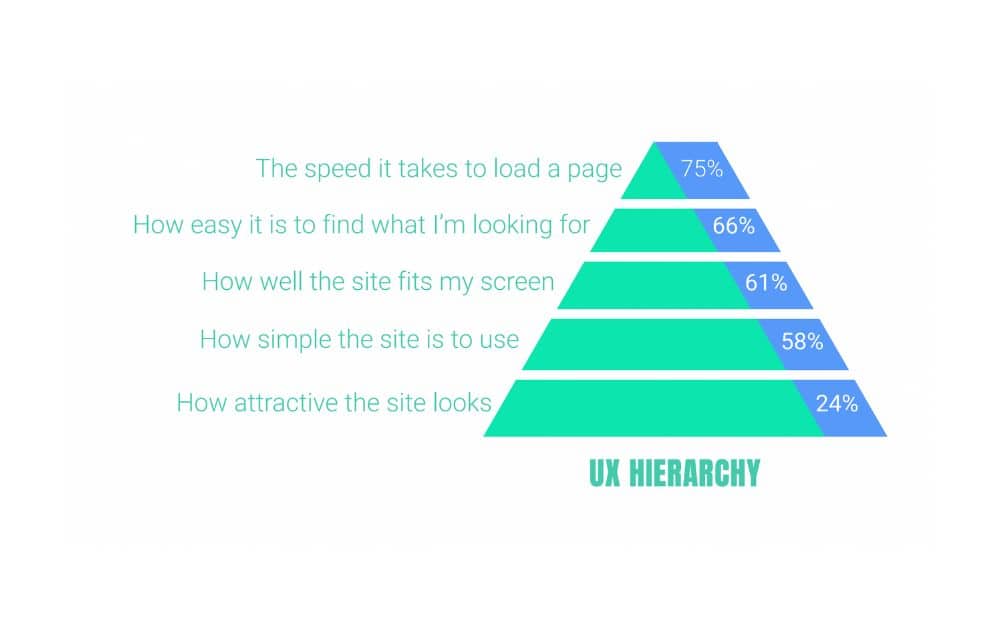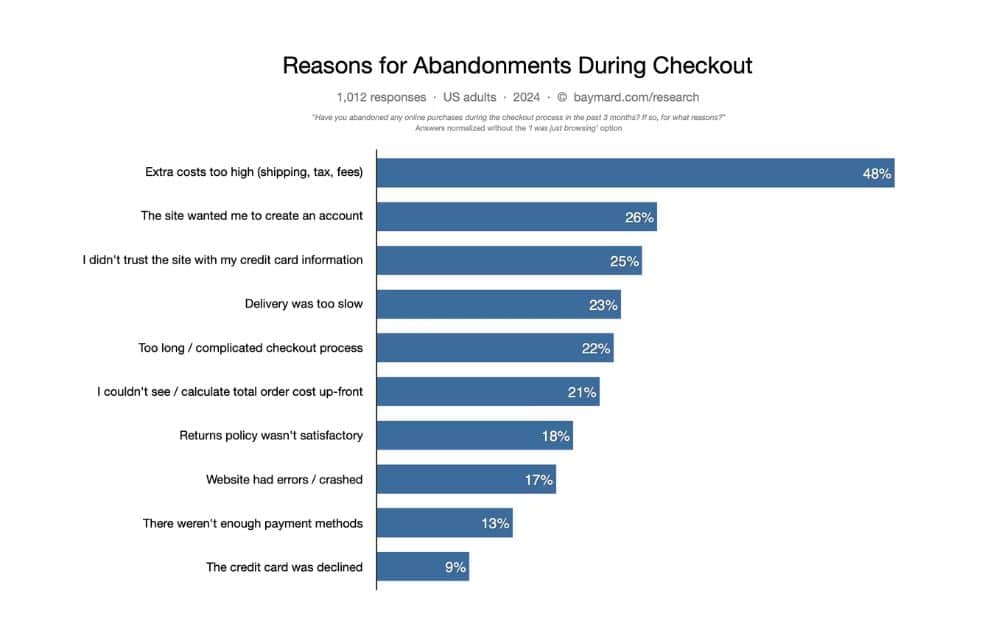The benefits of headless commerce have sparked widespread curiosity among businesses seeking to boost their online presence. In fact, headless commerce has become a buzzword known to many ecommerce players.
I popped into Google Trends and saw for myself that the keyword “headless commerce” has been on the uptrend for the past five years:

But headless commerce is more than just a trend or a buzzword; it’s a transformation in how sellers engage with their customers and manage their online presence.
Below, we’ll uncover the benefits of headless commerce and discuss actionable tips to navigate challenges when implementing it in your company.
What is Headless Commerce?
Before we dive deep into the benefits of headless commerce, let’s get definitions out of the way.
Headless commerce is a modern approach to ecommerce architecture that separates the frontend presentation layer from the backend functionality.
Unlike traditional ecommerce setups where the frontend and backend are tightly integrated, headless commerce allows for greater flexibility and customization by decoupling the two.
Here’s how headless commerce works, as illustrated by CBInsights:

As seen in the illustration, the backend serves as the engine that powers the online store. This includes commerce features, including the following components:
- Product catalog
- Inventory
- Shopping cart
- Discount logic
- Checkout
- Payment
- Customer information
Meanwhile, the frontend delivers the user interface and experience to customers, utilizing APIs (Application Programming Interfaces) to communicate with the backend systems.
This separation of the frontend and backend enables businesses to deliver more dynamic and personalized experiences to their customers across various channels, including:
- Websites
- Mobile apps
- Social media
- IoT (Internet of Things) devices
- Connected devices
- Messages
- Kiosks
Headless Commerce Advantages
What are the advantages of headless commerce? Here are a few:
Increased Flexibility and Customization
One of the primary benefits of headless commerce lies in the ability to tailor user experience. With headless commerce tools at their disposal, businesses can craft personalized journeys for their customers, from personalized product recommendations to tailored promotional offers.
Furthermore, the freedom to experiment with new frontend tech and design styles without disrupting backend functionality allows businesses to stay ahead of the curve.
This approach can align perfectly with the Flywheel model, where each tailored experience contributes to the momentum of customer engagement and loyalty.
Enhanced Performance and Speed
Speed is of the essence in ecommerce, and it’s one of the most prominent benefits of headless commerce. This optimization not only boosts search engine rankings but also improves user experience.
Data from Awwwards, an organization that organizes website designing and developing competitions, reveals that speed is paramount in user experience. In fact, three out of four users said speed is the most important aspect to them in the UX hierarchy.

Why is headless commerce faster? Headless commerce solutions are faster primarily due to the elimination of frontend dependencies. This separation enables businesses to optimize each component separately, resulting in faster loading times and improved website performance.
Streamlined Omnichannel Experience
Seamless omnichannel ecommerce is also one of the benefits of headless commerce, and it works well for sellers.
The unified backend architecture ensures consistent branding and messaging across various channels, whether the website, mobile apps, or social media platforms. This ensures that customers receive a cohesive experience, regardless of where they interact with the brand.
Furthermore, headless commerce facilitates seamless integration with third-party services and technologies, allowing businesses to expand their reach and engagement effortlessly.
Improved User Experience
At the heart of every successful ecommerce endeavor lies the user experience, and it’s one of the benefits of headless commerce.
By leveraging data-driven insights, businesses can deliver personalized interactions and recommendations tailored to each individual’s behavior and preferences. This level of customization not only enhances customer satisfaction but also drives engagement and loyalty.
Moreover, with a responsive design approach, headless commerce ensures optimal viewing experiences across devices and screen sizes.
Faster Checkout Processes
Also included in the benefits of headless commerce is a streamlined checkout process. This aspect is essential for maximizing conversion rates and minimizing cart abandonments.
Baymard data reveals that aside from high extra costs, shoppers who abandoned carts did so due to friction points, such as account creation requirements and concerns about site trustworthiness.

With headless commerce’s focus on optimizing checkout processes and implementing robust security measures, businesses can address these pain points and create a more frictionless and secure shopping experience for their customers.
Why is headless more secure? Because the frontend presentation layer is separate from the backend functionality, the approach minimizes the attack surface and makes it harder for malicious actors to exploit vulnerabilities.
Cost Efficiency and Scalability
Achieving cost efficiency and scalability is crucial for businesses across various industries, including sustainable ecommerce, grocery ecommerce, and many more. Fortunately, catering to these needs is one of the benefits of headless commerce.
By decoupling the frontend and backend, businesses can significantly reduce maintenance costs and accelerate the time-to-market for frontend updates and enhancements.
This streamlined process not only optimizes resource allocation but also enables businesses to respond swiftly to market trends and customer demands.
Moreover, headless commerce provides scalability to accommodate fluctuations in traffic and transaction volumes, ensuring consistent performance and user experience even during peak periods.
Headless Commerce Challenges and Actionable Tips
Just like any other ecommerce approach, you can’t enjoy the benefits of headless commerce without having to deal with its drawbacks.
Here are a few challenges you can encounter when implementing headless ecommerce and actionable tips to work around them.
Complexity of Implementation
It goes without saying that choosing a headless commerce architecture can be complex and challenging, especially for businesses with limited technical expertise.
Enjoying headless commerce benefits means you’ll first need to focus on careful planning, resource allocation, and close coordination across teams.
- Actionable Tip. Invest in thorough planning and consultation with experienced developers to ensure a smooth implementation process. Break down the implementation into manageable phases and prioritize key features for initial deployment.
Increased Development Time and Cost
To enjoy the benefits of headless commerce, you’ll first need to invest in custom development work, which can lead to longer development cycles and increased costs. Businesses may need to allocate additional resources and budgets to complete projects.
- Actionable Tip. Prioritize features that provide the most value to your business and customers. Consider leveraging pre-built templates or frameworks to expedite development and reduce costs.
Dependency on Technical Expertise
Managing a headless commerce setup requires technical expertise in areas such as API integration, frontend development, and system architecture.
Businesses without in-house technical resources may struggle to manage and maintain their headless commerce platform effectively.
- Actionable Tip. Provide comprehensive training for your team members to ensure they have the necessary technical skills to manage and maintain a headless commerce setup. Consider hiring or partnering with experienced developers for ongoing support.
Potential for Integration Challenge
Integrating a headless commerce platform with existing systems and third-party services can be challenging, leading to compatibility issues and delays in implementation.
- Actionable Tip. Conduct thorough compatibility testing with existing systems and third-party services before implementation. Prioritize platforms and tools with robust APIs and integration capabilities to streamline the integration process.
Frequently Asked Questions (FAQs)
Here are a few frequently asked questions about headless commerce for sellers:
Why is headless commerce called “headless”?
Headless commerce is called so because it operates without a traditional “head,” referring to the frontend presentation layer. This separation enables businesses to adapt and innovate more rapidly, as changes to the frontend do not impact the backend functionality.
How does headless commerce impact your customers?
Headless commerce impacts customers in a positive way by improving their shopping experience overall.
Because the frontend and backend are separate, headless commerce enables businesses to deliver more personalized and engaging user interfaces, and recommendations tailor-fit to their needs.
Is headless better?
Headless commerce offers increased flexibility, scalability, and customization compared to traditional e-commerce setups. It is an attractive option for businesses seeking to deliver dynamic and personalized experiences across multiple channels.
However, it may require more technical expertise and investment upfront to implement and maintain.
The Bottom Line
Without a doubt, headless commerce offers a lot of advantages to business owners. Not only does it offer a better user experience and personalization, but it also ticks the boxes of enhanced speed and checkout security.
To enjoy the benefits of headless commerce, including potential increased revenue, you’ll also have to invest more time, effort, and energy upfront to implement this approach.
Author




